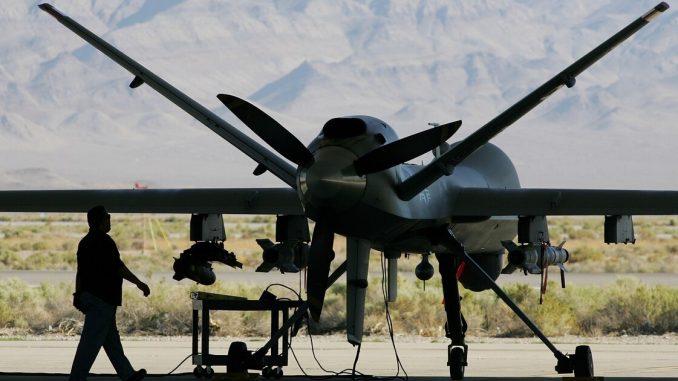
Detailed reports first surfaced in 2019 of the existence of a precision warhead equipped with six sword-like blades that allow the missile to cut through buildings or cars with ease.
The weapon had been in use for some time, reports claimed, with development dating back as far as 2011 under former President Barack Obama. It wasn’t until 2019, however, that over a dozen current and former U.S. officials discussed the vicious attributes of the R9X — also known as “the flying Ginsu” or “ninja bomb” — a non-explosive munition that was spawned from the widely used Hellfire missile.
The R9X, which deploys its six fixed blades in a halo seconds before impact, is believed to have been designed with the intent of eliminating high-value targets while drastically reducing the risk of collateral damage, traits multiple officials believe should have been publicly disclosed years ago to illustrate a willingness to minimize civilian deaths in densely populated urban centers in Iraq, Afghanistan, Syria, Somalia or Yemen.
Photos and videos posted on Twitter this week, meanwhile, indicate one such strike was carried out in Syria’s Idlib governorate using at least three of the 100-plus-pound warheads on terrorists with links to al-Qaida.
Two members of the al-Qaida-affiliated terror group, Hurras al-Din, were killed in the strike, according to the Syrian Observatory for Human Rights, an information office based in the United Kingdom. The SUV the two targets were reportedly driving was left in a mangled heap with clear signs of the bladed anvil’s handy work.
The presence of multiple blades, along with the warhead’s apparent AGM-114R-9X nomenclature, yielded additional evidence of the devastation’s source, The War Zone noted.
The missile’s “express purpose of reducing civilian casualties,” one official official told the Wall Street Journal, makes it both cost- and time-effective, as drones do not have to linger while awaiting clearance of civilians. So precise is the munition, according to another former official, that a target riding in the passenger seat of a moving car could be eliminated without killing the driver.
Still, the warhead’s use remains limited, as missions targeting buildings, convoys or camps are commonly carried out using explosive warheads.
One noteworthy R9X strike was reportedly carried out in January 2019 on Jamel Ahmed Mohammed Ali al-Badawi, an FBI most-wanted terrorist who was accused of orchestrating the deadly October 2000 bombing of the destroyer Cole.
The longtime al-Qaida operative was reportedly driving alone in Yemen when the R9X fell from the sky, shredding the vehicle and its driver.
After-action photos revealed no signs of scorched earth or burning vehicles typical of a Hellfire missile strike.



Be the first to comment